The Top 5 Learning Technology Trends Shaping Education in 2026
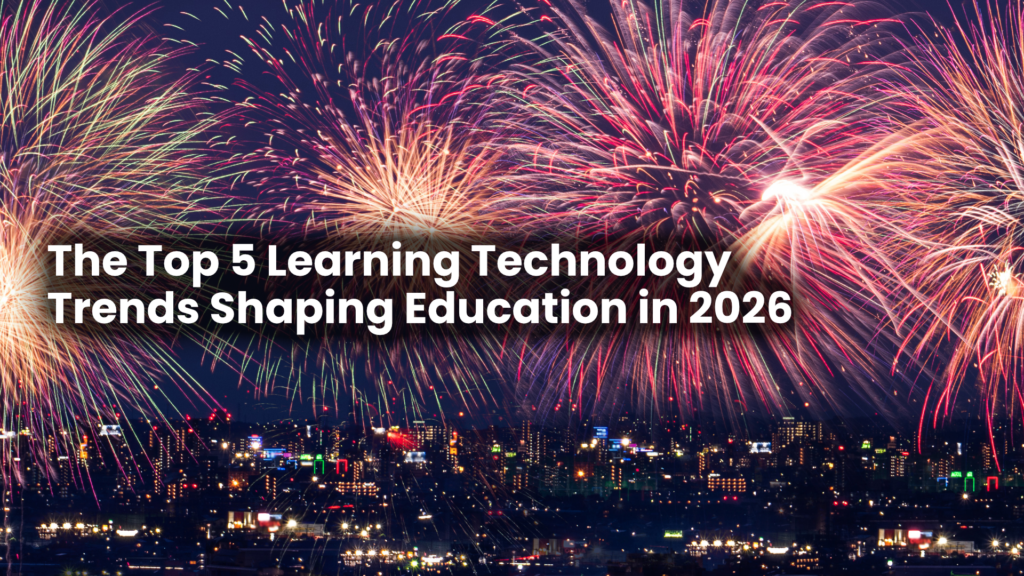
Education and training are not slowly evolving. They are being structurally reshaped. As we move forwards 2026, learning technology is shifting away from static courses, disconnected platforms, and one-size-fits-all content. In their place, we are seeing intelligent, adaptive, and genuinely scalable learning ecosystems emerge. Below are the five learning technology trends that will define the next era of education and workforce training, and how organisations can start benefiting from them today. Key Takeaways at a Glance AI is moving from content assistance to full learning generation One course can now power multiple formats and channels LMS platforms are becoming connected learning ecosystems High-quality education is being democratised at scale Trust and consistency are replacing unverified content libraries 1. AI Is Becoming the Engine of Learning Generation Artificial Intelligence is no longer an add-on to learning design. It is becoming the engine that powers it. Modern AI systems can now generate complete learning experiences from a single source. That includes structured courses, narration, visuals, assessments, summaries, and interactive elements. The result is faster production, lower cost, and far greater personalisation. Instead of static courses, learners receive content that adapts to their role, pace, and level of understanding. In practice, this feels less like consuming training and more like being guided by a digital mentor. Platforms such as Open eLMS Learning Generator already enable organisations to transform documents or prompts into polished learning resources in minutes, complete with professional voiceovers and video. AI now removes the production bottleneck that has limited learning teams for decades. 2. Multi-Channel Learning Is Replacing Single-Format Courses Learners no longer engage with content in one place or one format. The same learning experience may begin as a short video, continue as a podcast, and finish as an interactive scenario or game. Multi-channel development allows a single learning source to be repurposed instantly across formats. This approach dramatically increases reach and effectiveness. Learners can engage with training at their desk, on their commute, or in short bursts throughout the day, without fragmenting the learning journey. For organisations, this means: Faster content creation Consistent messaging across formats Better engagement across different learner preferences Learning is no longer about where people log in. It is about how learning fits naturally into their working lives. 3. Integration and Vibe Coding Are Breaking Down Learning Silos Learning systems are becoming connected, not isolated. Through APIs and vibe coding approaches, learning platforms can now integrate seamlessly with collaboration tools, project management software, and content creation apps. This removes friction between learning, working, and knowledge sharing. Instead of jumping between platforms, learners and creators operate within a unified environment where: Content updates flow automatically Learning aligns with real work Collaboration happens naturally This shift transforms the LMS from a content repository into a living learning ecosystem. Watch: How These Learning Trends Are Already Becoming Reality The trends above are not theoretical. They are already reshaping how organisations design, deliver, and scale learning. https://www.youtube.com/watch?v=h-l8ymlIpf0 4. The Democratization of Learning Is Finally Scaling For years, MOOCs promised global access to education but struggled to deliver depth, relevance, and sustainability. AI has changed that equation. High-quality learning libraries can now be created and maintained at a fraction of the previous cost. This allows organisations, institutions, and governments to provide meaningful education regardless of geography or budget. The result is a genuine democratisation of learning where: Access is no longer limited by location Quality is no longer limited by budget Learning can scale without sacrificing relevance This is particularly transformative for emerging economies, small organisations, and underserved communities. 5. Consistent, Verified Learning Is Replacing Content Chaos The future of learning is not more content. It is better content. As AI accelerates production, trust becomes critical. Learners and organisations need confidence that materials are accurate, up to date, and aligned with real standards. The next generation of learning platforms combines AI efficiency with human oversight. Content is regularly reviewed, updated, and validated, ensuring consistency across the entire learning ecosystem. This marks a shift away from fragmented, unverified repositories towards reliable, living knowledge systems. Bringing It All Together These five trends point to a single conclusion. Learning in 2026 will be: AI-driven but human-controlled Multi-format by default Integrated into daily work Globally accessible Consistent and trustworthy Crucially, this future is not years away. It is already available. Start Experiencing the Future of Learning Today All of these capabilities exist today within Open eLMS. By registering, you can explore AI-generated learning, multi-channel delivery, integrated ecosystems, and scalable education without rebuilding your entire infrastructure. The future of learning is not about replacing people with technology. It is about giving people better tools to teach, learn, and grow. Start that journey today.
Reflecting on Reliability: How Open eLMS Ensures Accuracy within AI Generated Learning
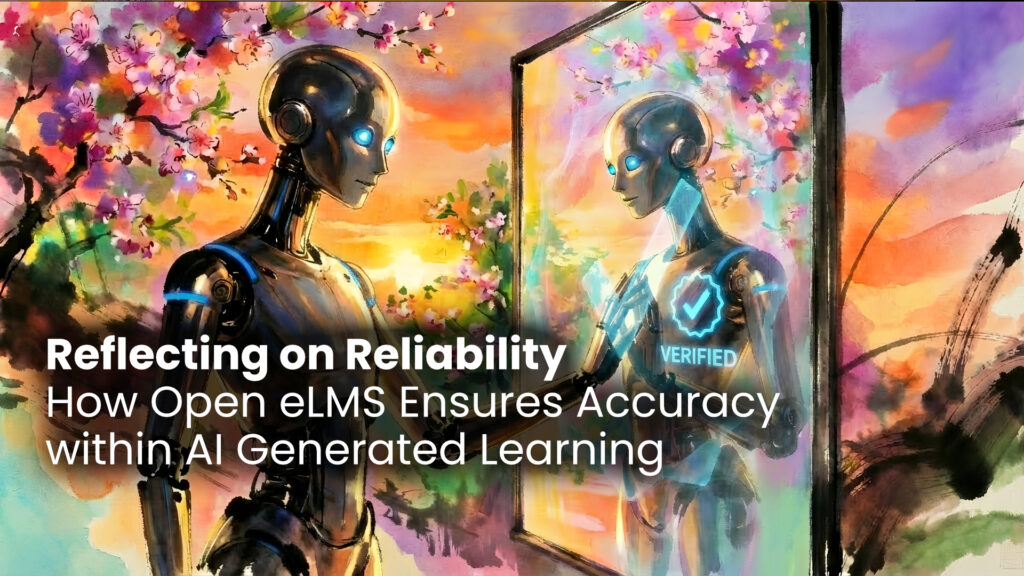
One of the biggest concerns surrounding AI in education is both simple and justified. What happens when AI gets it wrong? Anyone who has used generative AI knows it can sound confident while being completely incorrect. In education and training, that is not a minor issue. It is a deal breaker. Inaccurate content doesn’t just waste time. It damages trust and creates serious risks for learners and organisations. The future of AI in learning will not be defined by speed alone. It will be defined by trust. And trust is not automatic. It must be built, layer by layer. The Real Problem with AI in Education Most conversations about AI in education focus on how quickly it can create content and how much money it can save. These benefits are real. But they are only part of the picture. The more important question is this: can the content be trusted? AI systems do not understand truth. They are trained on large volumes of text and generate language based on probabilities, not facts. They can hallucinate, repeat outdated information, or introduce errors with surprising confidence. In learning, where accuracy is everything, this is a major challenge. Why One Layer of Checking Is Not Enough In traditional e-learning development, a single instructional designer or subject matter expert often carries the full responsibility for creating and validating content. That already introduces risk. If one person misses something, it stays missed. Simply replacing that person with AI does not fix the issue. It can make it worse. Without careful oversight, AI risks producing scalable, rapid content that is wrong at scale. Trustworthy learning content requires more than one pass. It requires multiple, complementary layers of verification. How Trustworthy AI Learning Is Actually Built The right approach starts by recognising that different content types need different AI tools. Background imagery can be created with visual models trained for contextual design. Diagrams, equations, and technical visuals require AI models trained specifically for structure, logic, or mathematical precision. That’s only the first step. Once the initial content is created, it is reviewed by human experts. Subject matter professionals correct errors, add nuance, and ensure the material aligns with current thinking. Then, a final AI layer is reintroduced. This time, it is used to scan the entire course for inconsistencies, outdated information, or missed connections. It provides suggestions based on the latest available research, creating a continuous quality loop where AI checks human inputs and humans check AI-generated material. This is how hallucinations are caught. This is how blind spots are reduced. This is how accuracy is strengthened over time. https://www.youtube.com/watch?v=RLELr7A3Qs8 Why This Approach Produces Better Learning Content When AI and human expertise work together in this layered way, their strengths support one another. AI brings speed, consistency, and pattern recognition. Humans provide critical thinking, professional judgement, and experience. The result is more robust and more accurate learning content. And because the process is modular and repeatable, it becomes easier to update. When facts change, the content can adapt quickly, rather than sitting untouched for years. Trust is no longer assumed. It is engineered. From Verified Learning to Scalable Delivery Once this multi-verified content is created, it unlocks a much larger benefit. Trusted content becomes the foundation for everything else. Using Open eLMS Learning Generator, this core content can be transformed instantly into a range of learning formats, all built from the same verified source material. A single e-learning course can be converted into a podcast, a short video series, revision notes, flashcards, social media assets, and even assessment questions. Each format supports a different learning style or context. Because the foundation is already thoroughly checked, every version carries the same level of reliability. What This Means for the Future of AI in Learning AI does not need to replace educators to transform education. In fact, its greatest potential lies in supporting them, enhancing their reach, amplifying their expertise, and improving quality at scale. The future belongs to learning systems that treat accuracy as essential, not optional. Systems that combine AI efficiency with human intelligence. Systems where no piece of content is published without being checked from both sides. Trustworthy AI learning content does not happen by chance. It is the result of design, structure, and rigorous process. Ready to See It for Yourself? You do not have to imagine this in theory. You can test it in practice. Try the Open eLMS Learning Generator today and see how a single source document can become verified, high-quality learning content, instantly repurposed across multiple formats. Try the Learning Generator hereLearn more about how it works Whether you work in corporate L&D, education, or content production, this is how to make learning content you can actually trust.
The AI Bubble Is Real: What Happens When It Bursts and Who Wins Afterwards

AI has become the centre of the tech world. Stock prices have surged, valuations have exploded, and billions are being poured into companies promising to own the future of artificial intelligence. But beneath the excitement, something far less comfortable is forming. The AI bubble is real. And when it bursts, it will not be the companies people expect that come out on top. This matters because what comes next will define the next decade of technology, learning, and digital business. Why the AI Bubble Exists Right now, AI is being treated like the next Google or Facebook. A winner takes all market where one or two companies dominate and extract enormous profits forever. Investors are backing this idea at scale, assuming that the company with the biggest model wins. The problem is that AI does not behave like a social network or a search engine. It behaves like infrastructure. AI models are built on publicly available research. Techniques spread fast. Experts move between organisations. Improvements that look proprietary today are replicated within months. There is no lasting secret advantage. Even more importantly, AI is brutally price sensitive. AI Is a Commodity, Not a Monopoly History gives us a clear warning. During the dot-com boom, internet infrastructure was meant to be the gold rush. Internet service providers were valued as if they owned the future. Most of them vanished. The real winners were not the companies providing the internet. They were the ones building on top of it. Amazon, Netflix and Spotify did not sell access. They used access to create value. AI is following the same path. Costs are collapsing. Chinese AI companies are producing models with comparable performance for a fraction of the price. In one recent case, a competitive model was reported to cost one fourteen-hundredth of the cost of a leading Western model. That changes everything. This is not a race to the top. It is a race to the bottom. And in commodity markets, the lowest cost provider always wins. What Happens When the AI Bubble Bursts When investors realise that AI models cannot sustain high margins, the market will correct hard. Valuations will fall. Companies built purely around selling models will struggle. Infrastructure providers will be squeezed until profitability becomes marginal. This will feel dramatic, but it will not mean AI has failed. It will mean AI has matured. Just like electricity, cloud hosting, and internet access before it, AI will become cheap, abundant, and interchangeable. That is when the real opportunity begins. Watch below to find out more: https://www.youtube.com/watch?v=PwW-rzJ8wVQ&feature=youtu.be Who Actually Wins After the Crash The winners will not be the companies selling AI. They will be the companies using AI to make things. The businesses that survive the burst will be model agnostic. They will switch between providers freely, choosing the best or cheapest option at any given time. They will not care who built the model. They will care what the model allows them to produce. This is already happening in learning and education. What This Means for Learning and EdTech For years, producing high-quality digital learning content was expensive. A single course could cost between £50,000 and £100,000 to build. That limited innovation and access. By treating AI as a tool rather than a product, that cost collapses. At Open eLMS, AI is used to generate complete learning programmes including courses, videos, podcasts, and assessments for pennies. The platform does not depend on a single AI provider. It moves fluidly between models, always optimising for cost and quality. The value is not in the AI itself. The value is in what gets built with it. That distinction matters more as AI becomes cheaper. The Only Question That Matters Now When the AI bubble bursts, panic will follow. Headlines will talk about failures and lost value. But underneath the noise, the real shift will already be complete. AI will no longer be the product. It will be the tool. The organisations that thrive will be the ones that understood this early. They will not be selling intelligence. They will be applying it. So if you are building with AI today, ask yourself one question, because it is the only one that will matter when the dust settles. What are you making with it? Try It for Yourself If you are ready to move beyond the hype and start building with AI, try the Open eLMS Learning Generator. Upload your curriculum or PDF, and see how AI can turn your ideas into complete e-learning courses, podcasts, and video content in minutes. The future is not about who has the biggest model. It is about who uses it best. Explore the Learning Generator at openelms.ai
Unlocking Africa’s Educational Potential: The Biggest Global Opportunity of the Next 30 Years

I recently returned from Africa, and it completely reframed how I view the future of education. What I found was not a continent waiting to be saved, but one full of energy, ambition and innovation. Coastal cities that rival the French Riviera, entrepreneurs in Nairobi building cutting-edge tech companies, and lecture halls in Ghana filled with students eager to compete on a global stage. Africa is not on the side-lines of global progress. It is ready to lead. A Demographic Shift That Changes Everything Across most of Europe and Asia, populations are ageing. In contrast, Africa’s median age is just 19. That fact alone carries huge implications. By 2050, one in four workers globally will be African. While many developed countries face a workforce shortage, Africa offers a growing, dynamic and young population ready to step in. But unlocking this opportunity requires more than optimism. It requires access to education that is affordable, scalable and genuinely high quality. The Real Barrier Is Cost, Not Talent In many African institutions, the desire to deliver excellent education exists, but the financial reality makes it almost impossible. Creating a single high-quality e-learning course through traditional development methods typically costs between £50,000 and £100,000. That is simply unfeasible for schools, colleges and training centres operating on a fraction of that budget. This is not a question of talent or capacity. It is purely a matter of access. These barriers are artificial and outdated, and now, thanks to technology, they can be removed. How AI Is Transforming Access to Learning Artificial intelligence is radically changing what is possible. Using AI-powered tools, institutions can now convert existing curriculum materials, such as textbooks or PDFs, into fully interactive e-learning courses in as little as 20 minutes. What once took months and tens of thousands of pounds can now be achieved for a fraction of the cost, without compromising on quality. This means that the same learning tools once reserved for elite universities can now be placed in the hands of schools and training centres across Africa. It creates a level playing field. Institutions are no longer limited by budget but empowered by technology. https://www.youtube.com/watch?v=dp72lUTkOT0 The Local and Global Impact Consider a secondary school in rural Ghana. Just a few years ago, it would have had little chance of delivering modern, digital learning content. Today, with AI tools, that same school can produce high-quality interactive courses tailored to local students and relevant to global standards. Or take a vocational training centre in South Africa. With these technologies, it can now create programmes that are as advanced and engaging as any offered in Europe or North America. When education is no longer constrained by geography or cost, talent becomes the true differentiator — and there is no shortage of talent in Africa. A Call to EdTech Providers This is not about charity. It is about smart business. Africa represents one of the largest and fastest-growing education markets in the world. For EdTech companies and training providers, this is an opportunity to engage early, build partnerships and create pricing models that reflect local realities. If you sell educational software, tools or services, consider offering regional pricing that makes your platform accessible to African institutions. The return is not just financial. It is reputational, strategic and deeply aligned with the future of education. Closing Thoughts For generations, wealth flowed out of Africa to build the infrastructure of Europe and North America. Today, we have a chance to reverse that — not through extraction, but through investment in people. The technology now exists. The talent is already there. The demand is growing. All that remains is action. When Africa succeeds, we all benefit. The next 30 years of global education will be shaped not by those who have the most, but by those who are most ready to lead. Africa is ready
Rethinking Notes: Why Mind‑Maps and AI Beat Linear Learning

We have long been trained as a species to learn in a straight line. Every notebook you have ever used, every outline, every list follows the same rigid, top‑to‑bottom structure. But did you ever stop to ask whether this approach actually serves how your brain works? The truth might unsettle everything you believe about effective thinking. Because your brain does not work in straight lines. It works in networks, associations and patterns. And forcing it into linear note‑taking may actually be sabotaging your ability to understand, remember and think creatively. Why Linear Notes Don’t Match How Our Brain Thinks Linear note‑taking seems logical. It is neat. It is tidy. But when you write bullet points or numbered lists, you are asking your brain to treat ideas as isolated entries, a format that ignores how your mind naturally builds connections. According to cognitive science, when we encounter new information, our brain immediately begins linking it to existing knowledge through associative thinking. By recording information in a sequential, linear fashion, you silently press the “pause” button on that natural process. Instead of allowing ideas to spread out, overlap and interconnect, you force them into straight lines. That may reduce comprehension, slow down recall and hamper creative insight. How Mind‑Maps Align with Natural Thinking, And What Science Says Mind‑maps are different. When you place a central concept in the middle and branch out related ideas visually, you’re respecting the way your brain stores information. Visual‑spatial processing engages multiple regions of the brain, creating what researchers call bilateral processing advantages. That means both hemispheres are involved, making recall and pattern recognition easier. Studies of mind‑map users suggest it can improve retention and speed of learning. By using spatial relationships, branches, colours and visual cues, a mind‑map effectively mirrors the neural networks forming in your head. Concepts are no longer isolated bullets; they are connected nodes in a mental map, ready for exploration, association and creative synthesis. Bringing Mind‑Maps to Life: The Role of AI Until recently, creating mind‑maps was a manual, time-consuming process. You had to read through dense documents, pick out key ideas, write them on branches, format, rearrange and refine. It worked, but only if you had time. Thanks to advances in artificial intelligence, you no longer need to build mind‑maps by hand. Modern AI tools can automatically scan a PDF, extract key concepts, identify relationships and structure, then generate a visual, brain‑friendly mind‑map in moments. This means any dense document, research papers, policy manuals, study notes, can be turned into a cognitive map within seconds. That makes visual learning scalable, quick and accessible to everyone. https://www.youtube.com/watch?v=XB0j48OoRVs What Mind‑Maps Can Do: Better Learning, Faster Recall, Creative Thinking Once you switch to mind‑maps (or at least blend them into your study habits), you may notice several advantages: Improved retention and recall. Because ideas are connected visually and spatially, you trigger multiple memory pathways. Faster understanding. Complex topics become easier to grasp when you see structure rather than walls of text. Enhanced creativity and insight. Visual connections encourage pattern recognition, analogies and cross‑topic thinking. Flexible revision. You can zoom out for a high-level view or drill down into a branch when needed, useful for revision, project planning or brainstorming. Mind‑maps turn passive reading into active thinking. Instead of memorising isolated facts, you build a mental network of understanding. When Linear Notes Still Make Sense, And How to Mix Methods That said, linear notes still have their place. For quick checklists, simple lists, or step-by-step instructions, linear formats can be efficient. The key is flexibility. Use linear notes when the task demands simplicity. Use mind‑maps when you need understanding, synthesis or creativity. Many learning professionals find that blending both methods works best: use mind‑maps for core comprehension and big-picture thinking, and linear notes for details or quick reference. Begin Thinking in Networks, Not Lines For too long we have been taught that learning means filling pages with neat, sequential notes. But now we know better. Our brains crave connection, association and visual structure. Mind‑maps, especially those generated or supported by AI, offer a powerful, brain‑aligned way to learn, revise and think. So the next time you open a dense document, don’t force yourself to read it like a script. Instead, ditch the linear page. Let your brain breathe. Build a map. Think in networks. You might just discover more than facts, you might unlock insight. To create your own mindmaps and learnign resources, visit www.openelms.ai and start your 14 day free trial of Open eLMS Learning Generator
The One Change That Drastically Improves Traditional Learning

For decades, we have accepted traditional learning as the only way to develop skills: courses, modules, manuals, workshops and assessments. But what if the entire concept is built on an assumption that no longer fits the world we live in? Today, we can access almost any piece of information within seconds. Yet we continue to design learning as if people need to memorise everything just in case they might need it one day. In this article we explore why this approach no longer works, what cognitive science says about it, and how a new model of learning is emerging. The flaw at the heart of traditional learning Most organisational training still follows a front-loaded, just-in-case model. We give employees as much information as possible up front, hoping they will store and recall it later. But research tells us the human brain simply does not work that way. We forget around 80% of information within 30 days, even when the training is well designed. This is not because people are unmotivated or because the learning is poor. It is because the brain is incredibly efficient, and one of its greatest efficiencies is discarding unused information. If someone learns a process on Monday but does not need it until Thursday, their brain often treats that knowledge as irrelevant. It fades because it was not immediately applied. This is the fundamental problem with traditional learning, it assumes memory behaves in a way it simply does not. Why retention collapses: The 24-hour rule IBM research highlights a critical insight. People retain and apply information effectively only when it is delivered within 24 hours of when they need it. After that window, retention declines rapidly, no matter how well designed the original training is. You would never memorise every road sign and rule before driving. Instead, you react to signs as you encounter them. A stop sign appears at exactly the right moment. That is the power of context. That is the power of timing. In the workplace, we too often expect people to recall details from training that may have happened months earlier, even though this runs against everything we know about human cognition. Signposting: What the National Parks can teach us To understand the alternative, picture a visit to a National Park in the United States. Before entering bear country, you do not attend a three-hour safety class. You see a clear sign that says:Bear area. Store food properly. The information appears at the precise moment you need it. This is the core idea behind signposting, or point-of-need learning. Instead of training people in advance, you embed critical knowledge directly inside workflows and systems so it appears when it is relevant. Imagine an employee opening a procurement system and seeing a short reminder about approval thresholds. Or someone uploading a document and receiving a quick prompt about data protection rules. No searching. No guessing. No relying on distant memories. This is learning that works with human cognition, not against it. Watch below to see it explained: https://www.youtube.com/watch?v=N59qIb5ALD4 The cognitive advantage: motivated attention When information is delivered at the moment it is needed, the brain treats it as important. Psychologists call this motivated attention, the heightened focus we experience when information helps solve a problem right now. Studies show that point-of-need information:• Increases task accuracy by 67%• Reduces completion time by 43% Not because the learner works harder, but because the information is timely, relevant and contextual. Turning traditional e-learning into signposted knowledge You do not need to throw away existing training. You transform it. Using tools that already exist today, and through the power of AI, a 45-minute compliance module can become:• A concise summary• A set of quick reminders• A glossary of immediate definitions• A reference document employees can open at any time Instead of assuming people will remember everything, you make it easy for them to retrieve the right detail at the right moment. Some learning management systems, including Open eLMS, even allow you to embed and track e-learning directly inside websites or systems. But signposting is not always linear. Often the learning must be delivered in a flexible, context-dependent way. That is where AI changes everything. How AI automates signposting The Open eLMS Learning Generator can take your existing PDF or training content and automatically extract everything needed for point-of-need deployment:• Key takeaways• Q&A• Important timelines• Keywords• Full transcript for deeper learning You get the best of both worlds: comprehensive training for structured learning and contextual prompts for real-world performance. This is training that works harder. And smarter. The bigger shift: Why memorisation no longer matters We do not live in an information scarce world anymore. We have more knowledge available to us than at any point in human history, instantly accessible through AI, phones, computers and even smart glasses. The challenge is not knowing more. It is knowing the right thing at the right moment. Traditional learning assumes we must store vast amounts of information in our heads. But that idea comes from a pre-digital era. Today, trying to remember everything is not just unnecessary; it is cognitively wasteful. Human brains are built for recognition, decision making and creative problem solving, not for acting like filing cabinets. A perfectly timed reminder when uploading a document is worth more than a four-hour compliance course taken six months ago. The future of learning: Just-in-time knowledge Learning is not dead. It is evolving. We are moving from front-loaded information to contextual prompts, changing from memorisation to performance support, and moving from learning just in case to learning on demand. The future belongs to learning that appears in the flow of work, at the exact moment human performance depends on it. When someone suggests traditional training, ask a simple question: In a world where I can access any information in three seconds, why are we training people to memorise it? The future of learning is not about knowing more.It is about accessing the right information at exactly the right moment. Sign up
How AI Is Changing the Way Students Revise: Smarter, Simpler, More Human
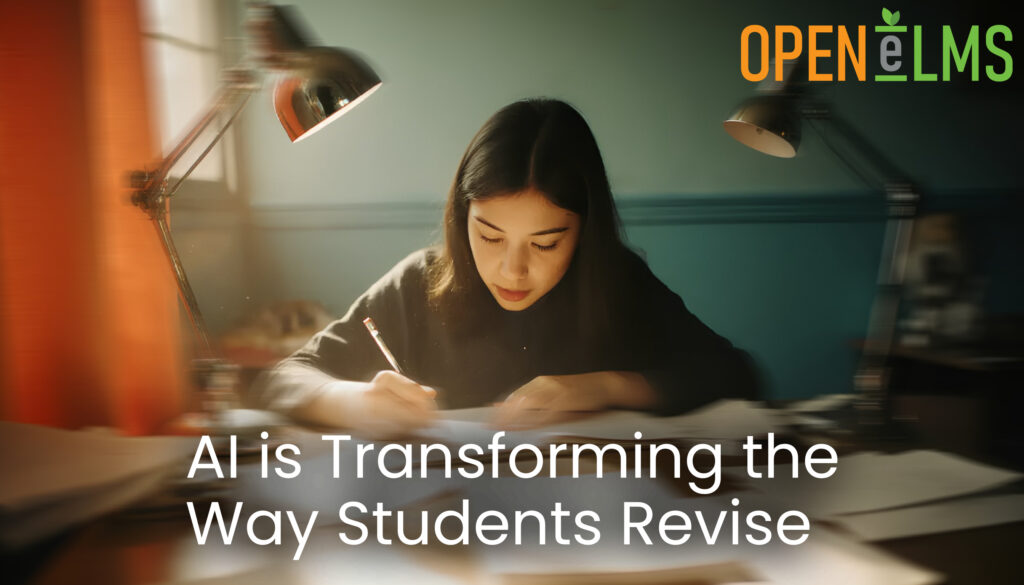
Do you ever sit down to revise a subject and just freeze? The textbook feels too dense. The key points blur together. You are reading, but none of it seems to stick. It is frustrating and exhausting, especially when you genuinely want to get the grade. The good news is that there is a better way to revise. One that does not rely on memorising huge amounts of text or repeating flashcards for hours. Today, AI tools are helping students revise smarter, not harder. Why Revision Feels So Overwhelming Most students are not unmotivated. They are overloaded. Revision often feels like a memory game. You are given long pages of notes and expected to make sense of them on your own. There is little room for clarity, feedback or personalisation. Instead of feeling supported, revision becomes a lonely task. But it does not have to be that way. In fact, revision is most effective when it is interactive, visual and active. Making Complicated Topics Make Sense AI tools are particularly good at breaking down complex topics into simpler explanations. For example, if you are struggling with a paragraph on a scientific process or a literature analysis, you can ask an AI model to explain it in GCSE-level terms. Suddenly, you are not just reading information. You are having it explained to you, like a teacher sitting beside you. The AI can tailor its answer to your level, use examples, and even rephrase it until it makes sense. That is not a shortcut. That is smart study. Smart Study Tools and Instant Feedback Revision works best when you are actively involved in the process. One way AI helps is through real-time quizzing and feedback. You can ask it to quiz you on any topic and it will adjust based on how well you answer. That means no more wasting time on what you already know. Instead, you focus on where you actually need to improve. Platforms like Open eLMS use the same method. Lessons are interactive and come with built-in quizzes, challenges and activities that help you test yourself in a low-pressure way.See it in action in the video below: https://www.youtube.com/watch?v=IvaBcsTkeb8 Visual Tools That Help You See the Bigger Picture One of the hardest things about revision is trying to connect everything together. What causes what? What came first? How does it all fit? AI tools can now generate mind maps, timelines, flow charts and infographics from your content in seconds. Instead of memorising pages of notes, you can see the whole structure of a topic laid out visually. This makes it easier to understand the big picture and remember how the parts relate to each other. Learning the Way You Learn Best Every student learns differently. Some prefer visuals, others need explanations. Some learn best by testing themselves, others through discussion. AI tools adapt to your style. They give you more control over how you revise, letting you focus on the method that works best for you. Whether you prefer written content, audio summaries, questions or visuals, you can create the kind of revision resource that makes sense to your brain. This makes revision less about stress and more about progress. What AI Cannot Do AI is not a replacement for thinking. It will not do your analysis for you. It cannot tell you which argument is stronger or what your exam marker is expecting. But it can help you understand the material, build confidence and focus on what matters most. And when used properly, it is not a shortcut. It is a tool that supports better, deeper learning. Smarter Revision Is Possible The best students are not necessarily those who spend the longest revising. They are the ones who revise with purpose, who know when to ask questions and who find methods that work for them. AI is making that easier. Whether you are preparing for GCSEs, A-Levels or just trying to get a handle on a difficult topic, smart tools are now available to support every stage of revision. You still have to do the work. But with the right tools, you can make that work more efficient, more focused and more effective. Visit www.openelms.ai to find out more.
Listening to Learn: Why Audio Is the Most Underrated Learning Format
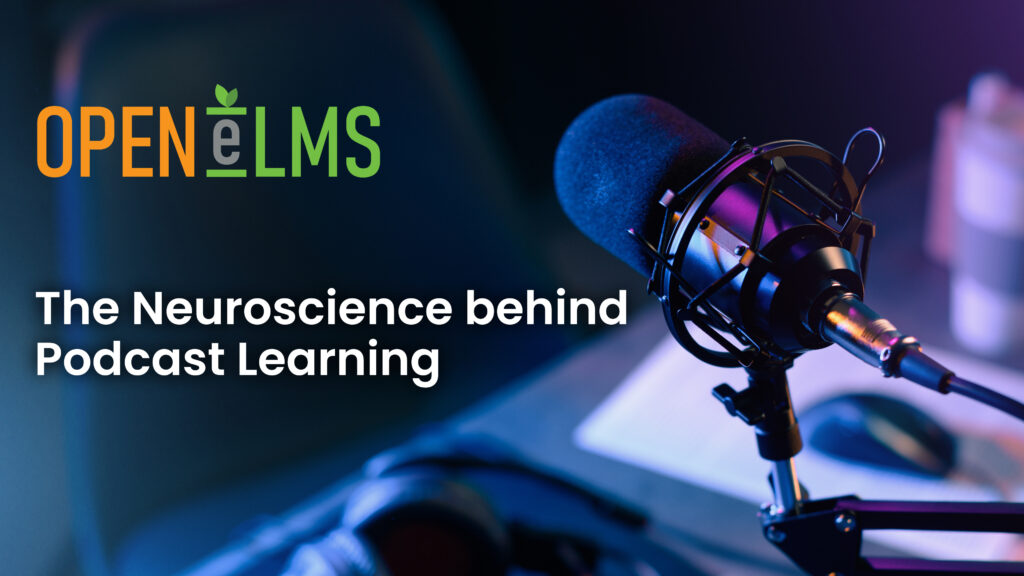
What if your commute, your bath, or the 20 minutes before bed became the most productive learning time of your day? It is not just possible. It is proven. And your brain is already wired for it. We all know that feeling of guilt when a training PDF sits unread, or when our “to-learn” list keeps growing. But what if instead of carving out more time to sit and read, you could learn more simply by listening? In this post, we explore the neuroscience behind why podcast-style learning is so effective, and how AI now makes it easy to turn any document into an audio-first experience. Why We Learn Better by Listening Let us start with a simple truth. We love podcasts. Whether it is history, culture, business or comedy, podcasts are now the go-to format for staying informed. But what makes them so effective for learning? It is not just convenience. It is biology. Our brains process auditory content differently than written text. When we listen, we engage what neuroscientists call auditory processing advantages. We are not just receiving information. We are actively decoding it in real time, triggering memory, emotion, and association. Take a podcast like The Rest is History. The hosts do not just list facts. They build stories, debate perspectives, and create meaning. This type of content engages multiple brain areas at once, creating what researchers call elaborative encoding. The result? Information sticks. The Neuroscience of Podcast Learning Studies show that listening to well-crafted educational content can improve memory retention by up to 65 percent compared to reading the same material in a static format. Why? Because: Podcasts allow us to create emotional associations with ideas They activate multiple learning pathways at once We can engage with content in low-distraction environments like walking or commuting When you listen, you are not just passively consuming. You are forming deeper neural connections, using both auditory and visual imagination to build context and meaning: https://www.youtube.com/watch?v=cK2ktC3jXmQ&t=12s From PDFs to Podcasts: How AI Makes It Easy The biggest challenge with audio learning has always been content creation. You might love the idea of podcast-style training, but turning your manuals, HR policies or textbook chapters into a polished audio format takes time and skill. That is no longer the case. Today, AI-powered tools can convert any PDF or document into podcast-ready content in minutes. You upload your material – a research paper, a training guide, a policy document – and it is transformed into an engaging, human-sounding, conversational podcast optimised for listening. You are not just converting content. You are adapting it for how the brain naturally prefers to learn. Try It for Yourself Here is a challenge. Choose a PDF you have been meaning to read. Upload it to Open eLMS Learning Generator and create your own podcast-style learning content. Then plug in your headphones and listen. Notice how the conversational tone makes complex ideas easier to understand. Observe the mental images you create while listening. Pay attention to how much more you retain afterwards You will see first-hand what cognitive scientists already know. Listening drives deeper comprehension. Learning 3.0: More Than Just Audio This is not just about making content portable. It is about creating a format that fits into your daily routine without needing to block out extra time. Your commute becomes a lecture, your workout becomes a workshop, your lunch break becomes a classroom Because podcast-style learning uses natural tone and structure, it helps remove the barriers that make traditional training feel dry or overwhelming. It is not just easier. It is more effective. Stop Reading, Start Listening The future of learning is not about more content. It is about more accessible content. Podcasts are already transforming how we consume information. It is time they transformed how we deliver training too. If you are only learning through reading or video, you are missing out on a powerful cognitive advantage. Visit www.openelms.ai to try for yourself. You will be surprised how much more you learn when the format fits your life.
From 20% to 85% Retention: How AI Gamification is Saving Corporate Training
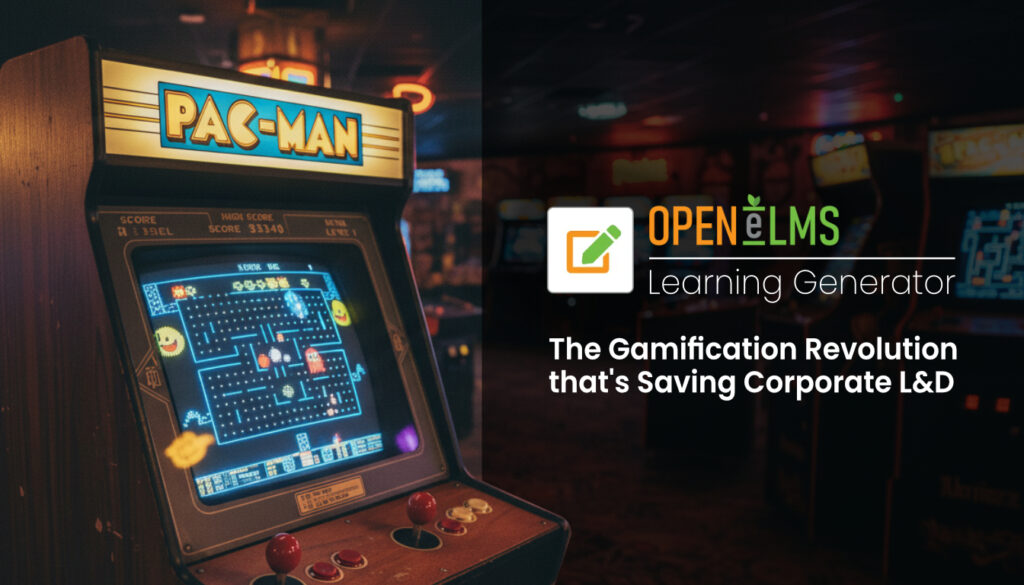
Corporate training is quietly failing. If your learners are left to their own devices, 80% of them will never finish the training you give them. Most organisations don’t even realise this because 20% completion rates are often considered “normal” in enrolment-based corporate learning. That means the majority of your budget is being spent on content that delivers zero return. But now, with AI-powered gamification, that’s changing – fast. In this article, you’ll learn how companies are reversing the drop-off problem and achieving up to 85% completion rates by making one powerful change to their learning design. The Problem with Passive Training Let’s get this straight. This isn’t about content quality. Compare it with entertainment platforms: Netflix has 90% completion rates TikTok engagement is near 100% Corporate training sits around 20% The issue is not that learners don’t want to learn. It’s that traditional training doesn’t motivate them to stay. Why? Because most training is passive. Learners click through slides or videos, wait for a certificate, and move on. There’s no real-time feedback. No meaningful interaction. No challenge. What Gamification Does Differently Gamification solves this by applying proven behavioural design. Here’s what works: Immediate feedback instead of waiting until the end Meaningful choices that let learners drive their experience Progressive challenges that match their growing knowledge This approach flips the dynamic. Instead of zoning out, people stay engaged. They retain more, they finish more, and in many cases, they even go back to replay training voluntarily. And the results? Completion rates can jump from 20% to 85%. Retention improves by 75%. The impact is real. The Real Engagement Upgrade: Classic Arcade Design So what’s the best example of this? Believe it or not, it comes from arcade games of the 1980s. Open eLMS Learning Generator uses AI to take your standard training content and repurpose it into fully playable arcade-style games. Think: Space Invaders where each question must be answered to avoid losing lives Pac-Man collecting safety protocols instead of dots, with each ghost representing a hazard Tetris where completing lines depends on correctly answering training questions These games didn’t survive because of nostalgia. They worked because they were perfectly designed to keep players engaged using simple mechanics, immediate feedback, and progressive difficulty. Turns out, those same principles are exactly what corporate training has been missing: https://www.youtube.com/watch?v=zhe0kLHRzU8 AI Makes It Effortless A few years ago, gamified content like this would have cost £50,000 or more and taken months to develop. One project mentioned in the video even reached over $1 million in production cost. Now, AI removes all that friction. The Open eLMS Learning Generator can turn your training content into multiple playable formats instantly. You don’t need game developers, coders, or specialists. AI handles: Code generation Environment design Interaction design You can even take it further into first-person games, virtual reality simulations, or AR training, without increasing production time. From Boring to Addictive: A New Standard in L&D The line between learning and entertainment is fading. Soon, you won’t be choosing between training and games. They’ll be the same thing. One piece of content. Infinite interactive formats. All powered by AI. Yes, Open eLMS still supports traditional gamification, flip cards, matching pairs, memory games, but the real revolution is happening in the arcade model. And once learners experience this kind of training, there’s no going back. Final Thoughts You can keep wasting 80% of your training budget on content learners don’t finish. Or you can start creating training people want to complete. The psychology is proven. The technology is available. The future of learning is here. Visit www.openelms.ai for a 14 day free trial
How AI Translation Turns One Course into a Global Product: The £100K Opportunity

If you’re only producing training content in English, you’re ignoring 85% of your global opportunity. Let that sink in. Most training companies don’t realise how much they’re leaving on the table. Not because their training isn’t good, but because it’s only accessible to a small slice of the global workforce. And while the need for multilingual training has always been clear, it used to be expensive, slow, and logistically painful. So most businesses just didn’t bother. Now? AI has changed everything. In this article, you’ll see why the companies that embrace AI-powered translation can double their market reach almost instantly without creating any new content. Let’s break this down. The Numbers Don’t Lie: Why English-Only Is a Costly Limitation Only 15% of the global workforce speaks English as their primary language. That means 85% of your potential learners and clients are not being served by your existing content. So if your training is English-only, you’re voluntarily shutting the door on massive growth. But here’s where it gets interesting. Most companies know this. They just don’t act on it. Why? Because traditional translation feels like a luxury. The Translation Problem (and Misconception) The old model of translation is genuinely expensive and slow. You’d be looking at: £15,000 to translate one training course into Spanish (including voiceovers and presenters) Eight weeks of production time Add another £20,000 and 12 weeks if you want Mandarin Multiply that by just five languages, and you’re looking at over £100,000 just to localise one course. For most organisations, it’s just not realistic. But what if the entire premise of that pricing is now outdated? What AI Has Changed Forever AI has removed almost all the friction. What once took months now takes minutes. What cost thousands now costs next to nothing. And we’re not talking about Google Translate with a robotic voiceover. We’re talking about: Native-sounding presenters Perfect lip sync Cultural adaptation Fully localised content AI tools like Open eLMS Learning Generator are now producing professional-grade multilingual content that feels human and natural. Case in Point: Open eLMS Learning Generator in Action https://www.youtube.com/watch?v=rUwUMDyZpN4&feature=youtu.be Let’s look at what this actually means. Take a 15-minute workplace safety course designed for 500 English-speaking employees. With Open eLMS, you can duplicate it into Spanish, French, German and Mandarin automatically. Time taken? Under 20 minutes. Cost? Negligible. Quality? Shockingly good. The Spanish version includes proper pronunciation and natural gestures The Mandarin version nails the tonal inflection The German version adapts culturally appropriate examples This isn’t translation. This is full localisation that feels custom-made for each language group. Market Multiplication, Not Just Translation Let’s say your English course earns you £10,000. Now, you add four more languages. You’ve just opened your training to five entirely new markets without recreating your content. Because the marginal cost of each language is now effectively zero, the revenue becomes almost pure profit. This is not just localisation. It’s a multiplier effect for your training business. Don’t Get Left Behind Most of your competitors are still operating under the assumption that translation is too costly. But the companies who move fast and embrace AI will own the global audience. While others wait, they’ll be serving the 85% that everyone else is ignoring. Final Thoughts This isn’t theoretical. The technology exists. The economics make sense. The only real question is: Will you act before your competitors do? Open eLMS offers a free 14-day trial of its Learning Generator, complete with AI-powered language translation. Open eLMS Learning Generator Try it out today and unlock the global market that’s been right in front of you the whole time.
